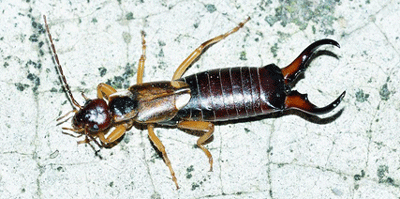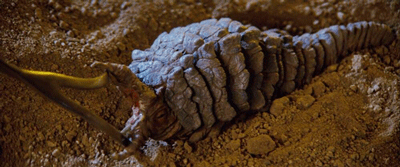The monster in my ear
The monster in my ear
How an aural invasion led to a meditation on what makes experiences memorable.
By Brad Berens
What are the ingredients for a memorable experience? One recent event has some clues.
My scintillating compadre in nerdery, Benjamin Karney, and I have been friends since we were eight. A few days ago, we had a chance to catch up while he was on a long commute and I was working from home. I don’t get great signal on my iPhone in my home office, so I grabbed my trusty Bose noise-cancelling, over-the-ear headphones and wandered up our long driveway towards the gigantic climbing structure in our front yard that my kids loved when they were little. These days, it mainly supports my phone calls with friends, particularly on beautiful Oregon summer days.
When we work to create memorable experiences, we typically focus on the first ingredient (the experience itself). After the isolation of COVID lockdown, we’re more attuned to the value of shared experience, both in real time/different places and especially real time/same place. The hardest ingredient and the one that gets the least attention is comparison, the connection to the past that then leans into the future.
As I left the house, I felt something momentarily prick at my left ear. A few steps later, it happened again. I whipped the headphones off to glance at the left cup. Nothing. I had just replaced the cushions on the headphones, so as Ben and I were chatting a tiny background part of me wondered if I’d screwed up somehow and caused a short circuit. I sat on one of the swings. We kept chatting as he drove and I swung.
It happened again. “Hold on a sec.” I took the headphones off, popped my iPhone onto speaker mode, and said to Ben, “there’s something wrong with my headphones.”

Source: Pointe Pest Control
The next thing Ben heard was a loud scream of “Aaaah!” because this is what I saw crawling around inside the left cushion (right):
“What happened?” Ben asked.
“It’s a bug! In my headphones! With big pincers! Yuck!”
My heart was racing like Seabiscuit on a quadruple espresso. I picked up a stick and used it to chase the bug around and around the cushion. Finally, I flipped the bug to the ground. It vanished into the wood chips under the climbing structure.
“It’s gone,” I said.
“Pincers?” Ben asked.
“Yeah, it was long and mostly black with gigantic pincers on one end.”
“You mean like the things Khan sticks in Chekhov’s ear in Wrath of Khan?” Ben asked.
My skin crawled at the too-apt comparison. “Thanks, Ben,” I said. “You just made it so much worse.”
It’s worth sharing here that I. Don’t. Like. Bugs. At. All. When I later shared this story with La Profesora, she observed that it was a nice indication of how much I’ve mellowed with age. If this had happened a couple decades earlier, she’s confident that I would have required psychiatric care. In a rubber room. With meds. Lots of meds.

Source: Memory Alpha
Here is what the “Ceti eels” from the classic 1982 movie Star Trek: The Wrath of Khan look like (right):
Yuck.
In the movie, Khan, the villain, sticks larvae from an adult eel into the ears of Starfleet officers Chekhov and Terrell because chemicals from the larva take away the recipients’ free will. (You can watch the indigestion-inducing scene here.)
I later learned that the bug in my headphones was an earwig, an invasive species in Oregon that people mistakenly believe crawl into ears like the Star Trek eels.
I’ll never forget my earwig invasion. It’s worth teasing out why.
What makes things memorable
If I had been alone when I found the earwig in my headphones, then the neighbors might have wondered at the shriek coming from the Berens home, but that would have been it. I might have mentioned it in passing to the amusement of La Profesora or our son, but aside from later occasional night sweats the experience would have faded with time.
If everything about the experience was the same, but Ben had not made the Star Trek comparison, then the memory would have faded, although perhaps more slowly.
It was the three-way combination of 1) an unusual (and icky) experience that happened 2) when I was interacting with Ben in real-time, and 3) that Ben instantly contextualized with a pointed, accurate (and even ickier) comparison.
In previous columns, I’ve talked about the nature of eventness (why real-time and shared experiences are more valuable than solo ones), so I won’t go over that again here other than to point out that technology—in this case a mobile phone call–can extend eventness beyond two people in the same place at the same time.
In his 1991 book The Rationality of Emotion, philosopher Ronald de Sousa argues that using the word “emotional” as a synonym for “irrational” misses how we logically derive our emotions from what he calls “paradigm scenarios,” which often come from the stories we consume. More recently, in How Emotions Are Made, psychologist Lisa Feldman Barrett has argued that we actively construct our emotions on the fly.
Ben’s Star Trek comparison did two things: it taught me how to feel about the earwig (scared and out of control) and it connected a fleeting experience to a long-term memory from a movie that I’ve seen many times and thought about even more.
Another term to describe that connection is Experience Stack, which is an ongoing thread in my writing.
When we work to create memorable experiences, we typically focus on the first ingredient (the experience itself). After the isolation of COVID lockdown, we’re more attuned to the value of shared experience, both in real time/different places and especially real time/same place. The hardest ingredient and the one that gets the least attention is comparison, the connection to the past that then leans into the future.
But that’s where the magic happens.
__________

Brad Berens is the Center’s strategic advisor and a senior research fellow. He is principal at Big Digital Idea Consulting. You can learn more about Brad at www.bradberens.com, follow him on Post and/or LinkedIn, and subscribe to his weekly newsletter (only some of his columns are syndicated here).
See all columns from the Center.
July 14, 2023

